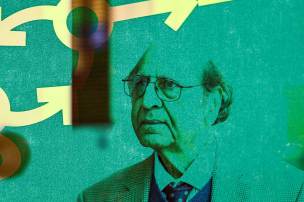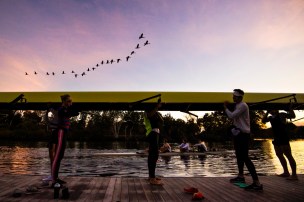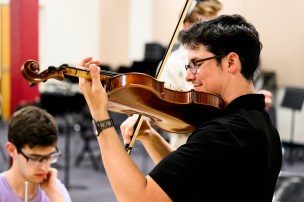Published on
Deaf performer and ‘fan favorite’ Erin Rosenfeld takes Broadway
This Northeastern graduate, TikTok star, Miss Rachel series regular and actress recently made her Broadway debut in ‘Grey House.’ Deaf actors are breaking new ground on stage and screen—and making performance spaces more accessible.
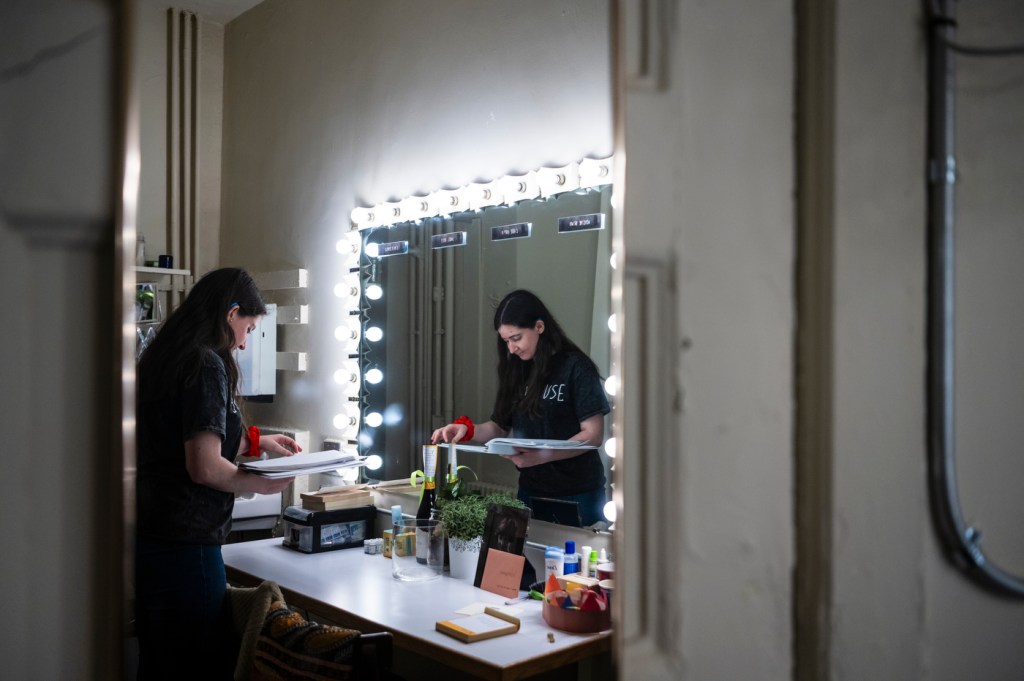
The stage lights go up in the Lyceum Theatre, revealing a woman with a straggly gray braid dozing on a couch and a half-dozen actresses dressed in nightgowns playing teenage girls. They swarm the rickety, overstuffed cabin interior that is the set of the Broadway horror play “Grey House,” thumping the floorboards, crouching on a shabby dining table, scurrying up and down stairs slamming doors, and chanting in spooky unison: Get in the house girl, it’s time for dinner!
The vibes are more cheerful in a dressing room above the stage where Erin Rosenfeld keeps an eye on the backstage monitors. Rosenfeld, a 2023 Northeastern University graduate, serves as understudy for three of the teenage roles—primarily “Bernie,” a silent, deaf character who communicates through sign language. When the show first opened this past spring, Rosenfeld and her fellow standbys paid close attention, taking notes on blocking changes and line cues in case they had to go on. But this is the play’s last week before closing on July 30; they know their parts inside out. “We’ve gotten more comfortable, and there’s a lot more shenanigans that occur backstage,” she says. The auxiliary cast spends hours bonding in a comfy greenroom in the Lyceum’s basement, playing games and bedazzling each other’s faces.
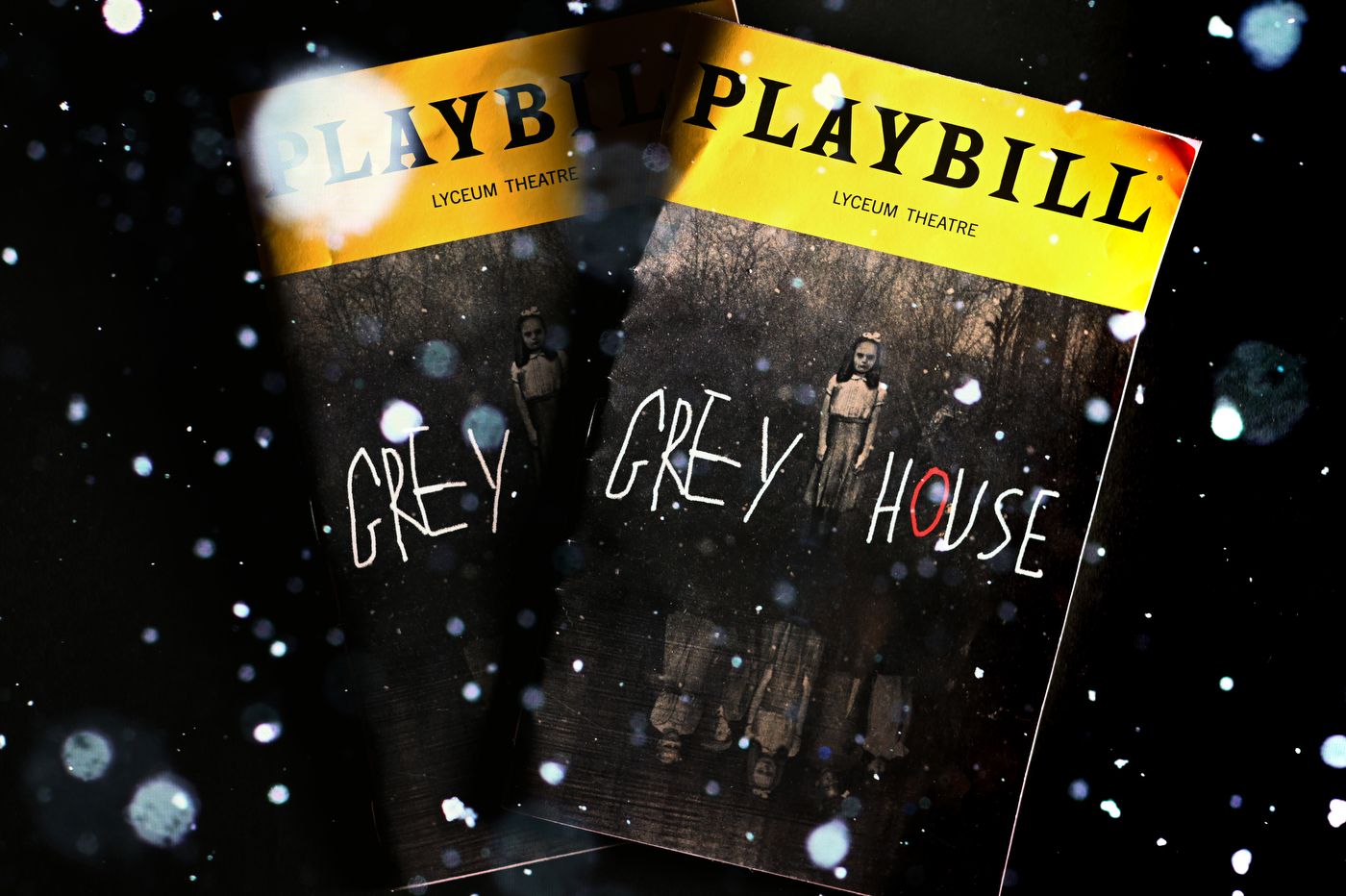
“I had jewels all over myself the other day,” Rosenfeld, 22, laughs. “We have some younger cast members, so there’s teeth falling out and stuffed animals going bungee jumping down the stairs.”
“Grey House” is Rosenfeld’s Broadway debut—an accomplishment she couldn’t imagine as a child. Like the character Bernie, Rosenfeld is deaf. She was classified as “hard of hearing” at 18 months and outfitted with tiny hearing aids that she “kept trying to throw out the car window,” to the chagrin of her parents.
“I always wanted to be an actor,” she says in an interview in the Marriott hotel lobby across the street from the theater. “But it wasn’t necessarily something I admitted to other people or even myself growing up.” Aside from singular one-offs like Oscar winner Marlee Matlin, successful deaf actors were all but invisible. “I didn’t have characters on stage that I could look up to.”
Rosenfeld’s path from an American Sign Language major at Northeastern to Broadway, however, is demonstrative of new inroads to careers in film, theater, and television for deaf and hard of hearing actors that have emerged in the past decade or so. An estimated 4,000 babies in the U.S. are born deaf each year, and the Centers for Disease Control and Prevention (CDC) estimates that 6% of American adults live with some level of hearing loss.
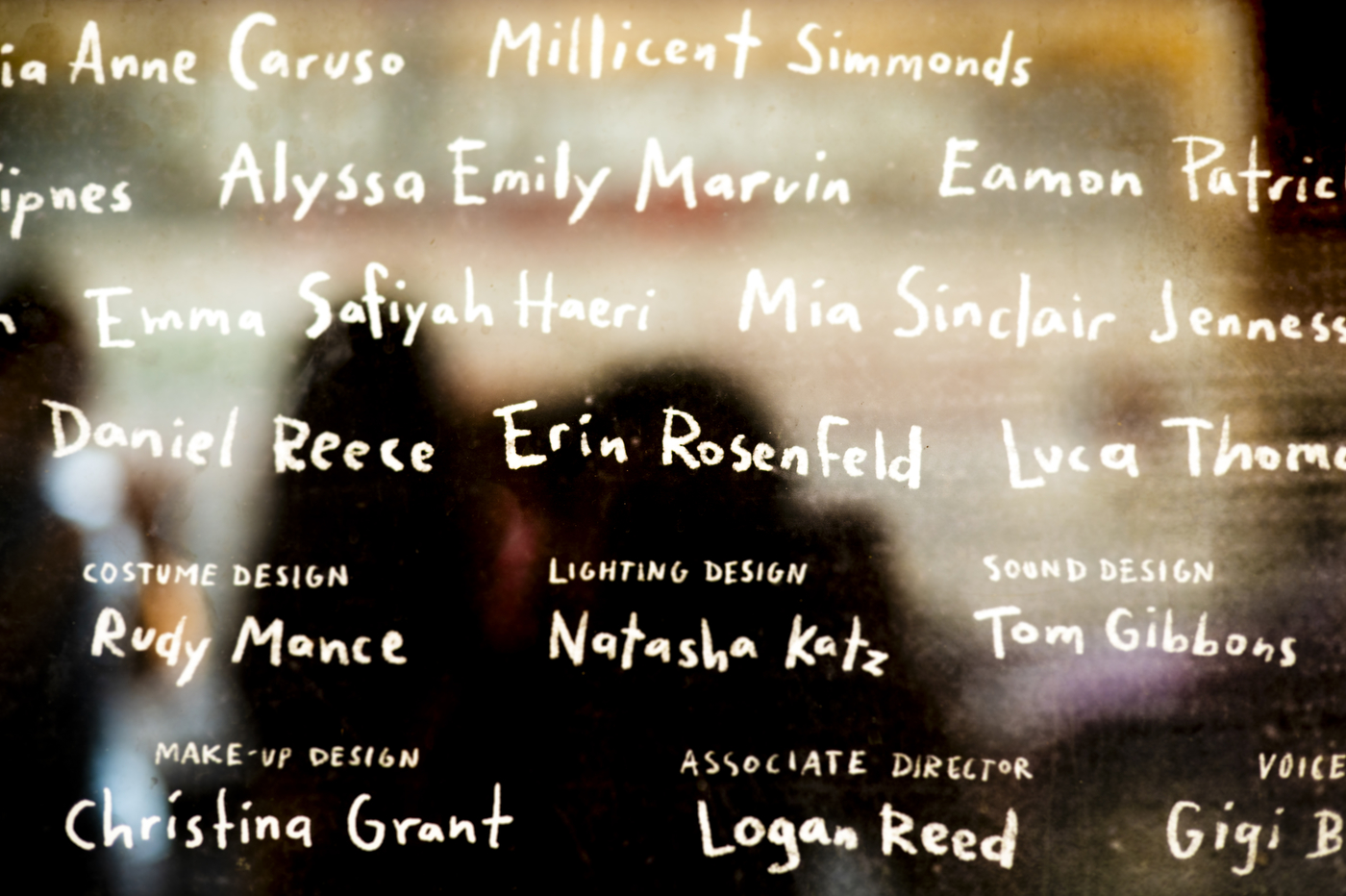
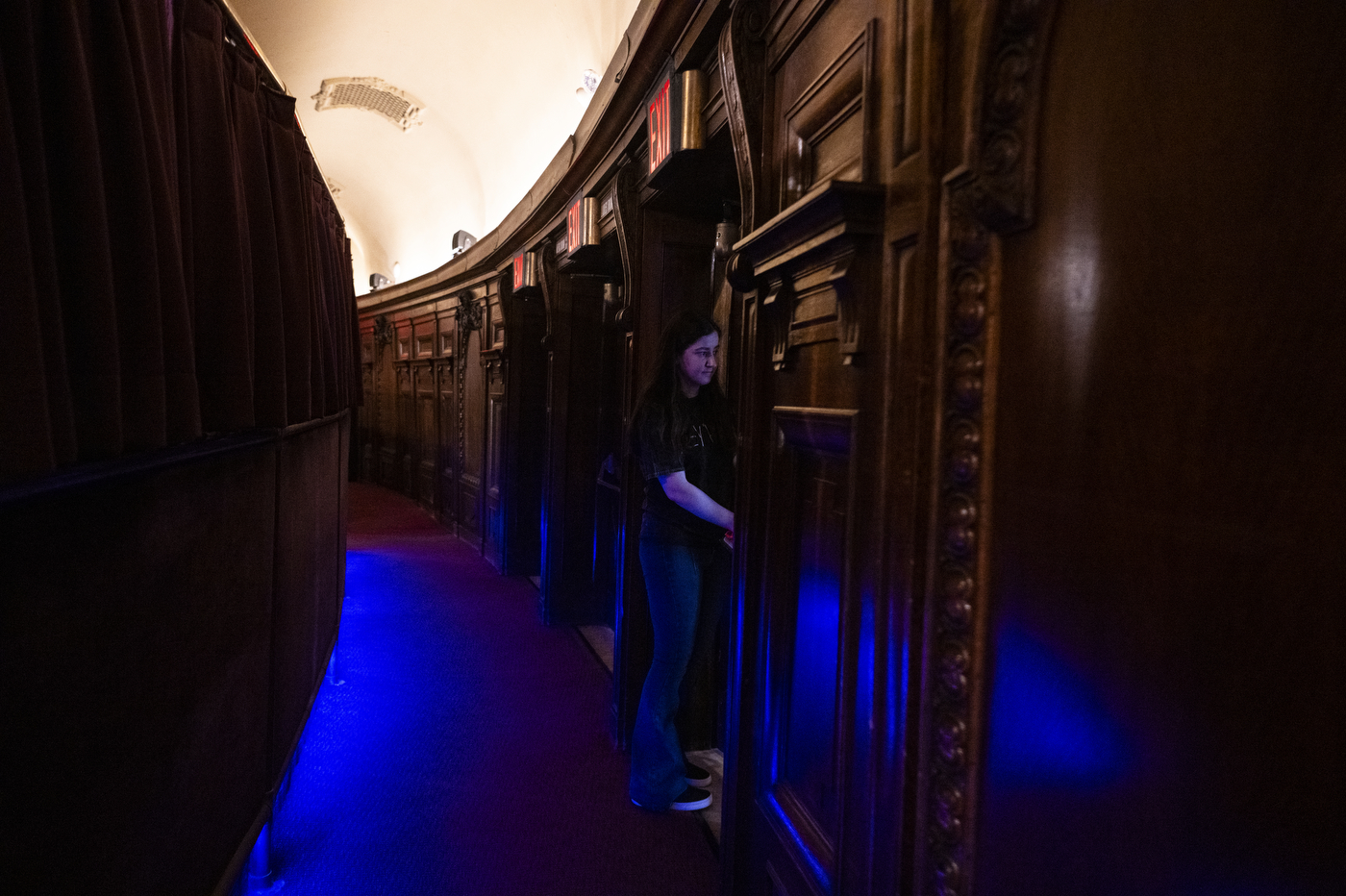
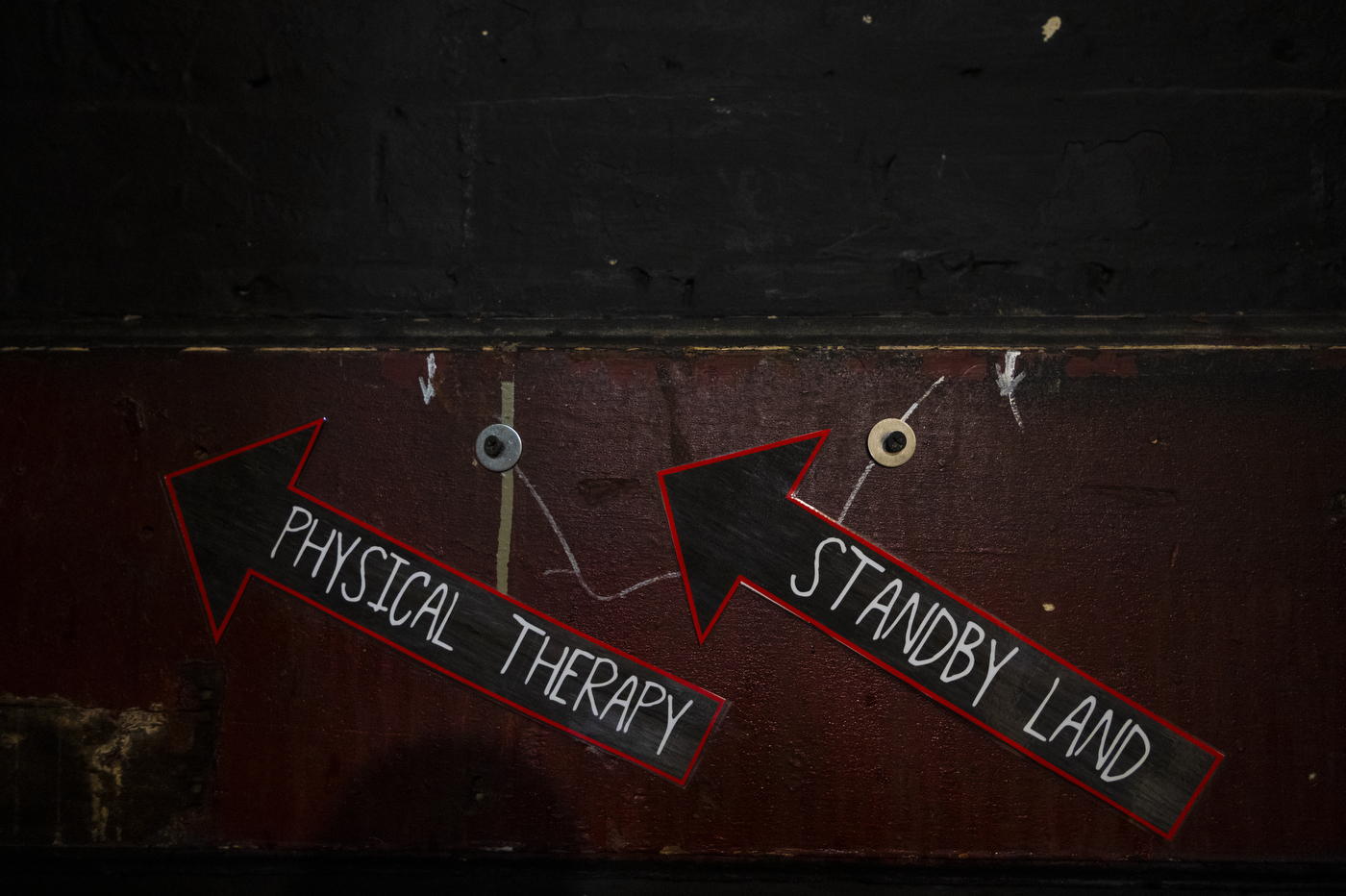
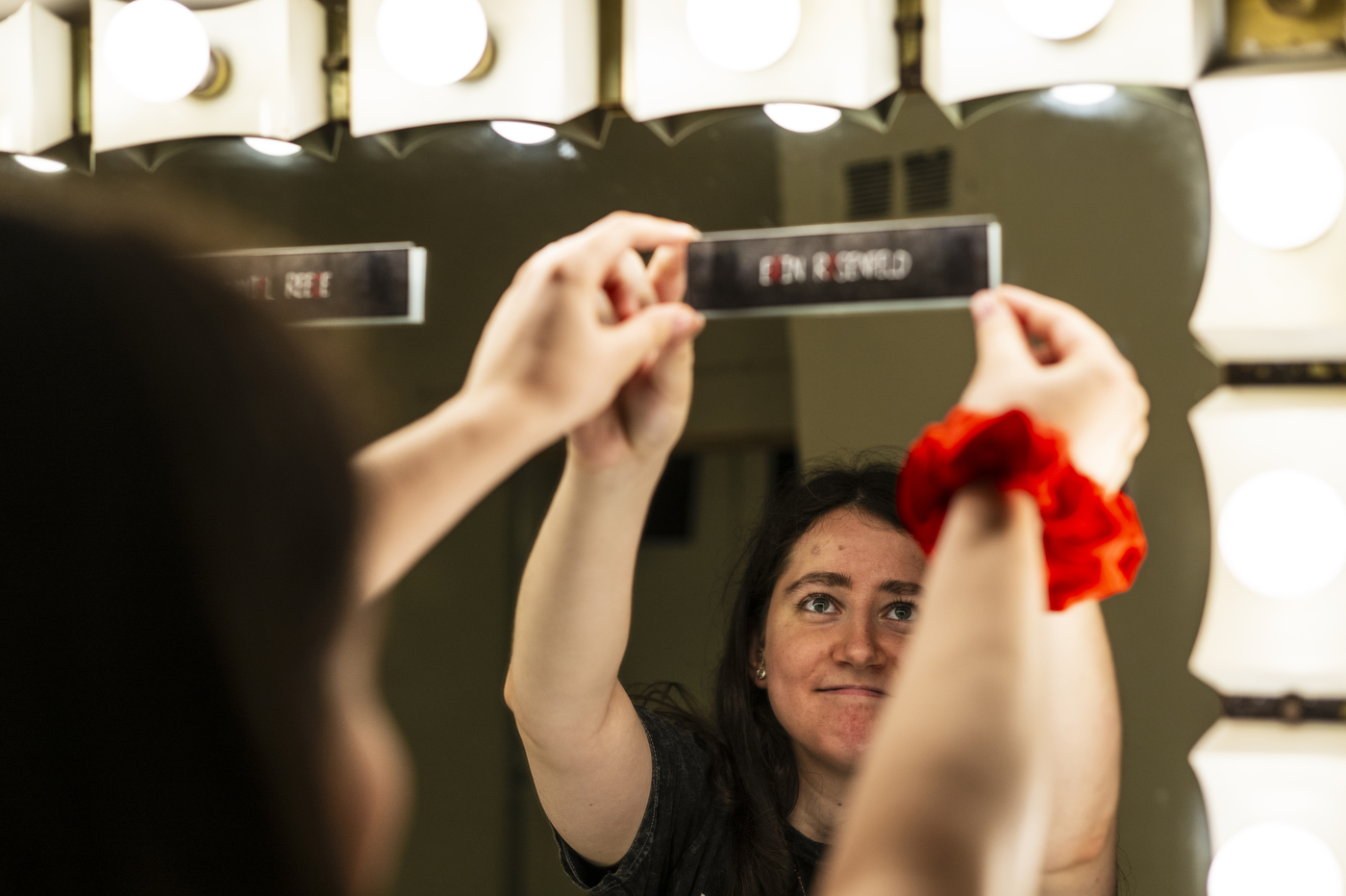
There are now more characters onstage for them to look up to thanks to a confluence of innovative stage and film productions, the rise of visually-based social media platforms for performers to showcase their talents and a spate of high-profile breakthroughs for deaf actors and American Sign Language interpreters.
In 2015, a revival of the musical “Spring Awakening” made waves for integrating ASL throughout and featuring a cast of deaf and disabled actors. In 2022, Troy Kotsur became the first deaf male actor in history to win an Oscar—for “CODA,” a best picture winner about a deaf family. In 2023, Kotsur was one of three ASL performers at the Super Bowl, along with Justina Miles, who went viral for her interpretive work during Rihanna’s halftime show. Rosenfeld herself emerged on TikTok—she has nearly 400,000 followers, over 12 million likes on her videos, and an ad partnership with the education company Pearson—and YouTube, where she is a regular cast member on the wildly popular Miss Rachel videos for toddlers.
“When people see signing, they think it’s cool, right?” says Rachel Berman-Kobylarz, a profoundly deaf teaching professor in Northeastern’s ASL program. “They don’t necessarily understand it, [but it] creates visibility for our community. And we’ve worked really hard to make sure that we are being represented onscreen. It hasn’t been an easy journey at all, but we’ve definitely made strides.”
A thrilling breakthrough
“Grey House” reveals its full terror slowly over the course of its 90-minute runtime. A couple’s car breaks down in a snowstorm, and they take refuge in the remote cabin. Jump scares, hauntings by strange figures and past traumas, and gruesome injuries ensue. The roles Rosenfeld covers are at the center of the play’s mystery; sign language is one of the ways the girls communicate their shared intentions, eventually culminating in a grisly plot twist. Google the ending if you’re curious. Rosenfeld is a horror fan, especially of psychological thrillers like “The Conjuring,” and “‘Grey House’ is definitely in that vein,” she says.
For our interview, Rosenfeld, who speaks and reads lips, converses with the aid of an ASL interpreter on the show’s production crew. “I can hear you—I can hear that there’s a sound coming, but I don’t necessarily understand it,” she explains. She uses hearing aids in both ears whenever she’s out and about. But the aversion she had as a toddler never completely went away. “The second I’m in the house, they’re off,” she says.
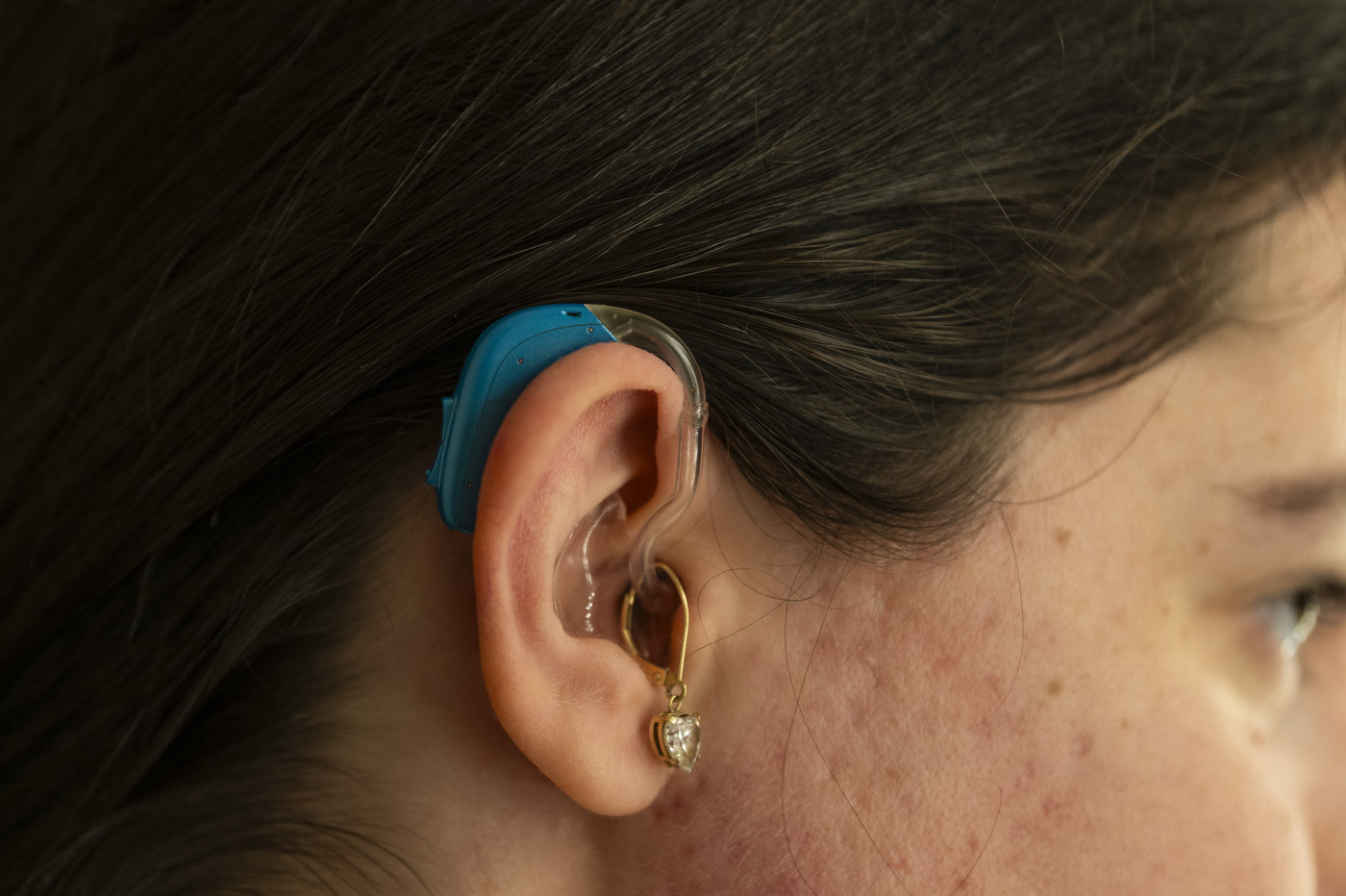
Rosenfeld wears a “Grey House” T-shirt to be spotted for the meeting, but it’s hardly necessary. In videos and headshots, her dimpled, open face and big blue eyes are indelible enough to easily pick her out of the Times Square maw, even days after seeing them. As an actress, “she has a soulful expression which runs very deep,” says “Grey House” production manager Devin Day. “There’s a lot of active listening that is seen and felt.”
Born and raised in the Northbrook suburb of Chicago, Rosenfeld has been performing since age 3. Her first big role, at 10, was as Dorothy in a children’s theater production of “The Wizard of Oz” in which she sang and spoke traditional lines. She grew up going to shows at the Steppenwolf Theatre Company, co-founded by “Grey House” lead Laurie Metcalf (the one dozing on the couch).
Rosenfeld was 14 when she saw YouTube clips of the deaf-accessible production of “Spring Awakening.” It was a watershed moment for disability on Broadway stages writ large; the show was also the Broadway debut for Ali Stroker, the pioneering wheelchair-using actress who went on to win a Tony Award in 2019.
“That was really the first time that I saw people signing onstage, and the feeling was so … I can’t even describe it,” Rosenfeld says. “I was like, that’s what I want to do. And I think that was the first time I admitted it to myself.”
Her desire to be an actor led to Northeastern, home to one of the only ASL undergraduate programs in the country and the oldest dedicated bachelor’s degree for would-be interpreters. “I fell in love with the campus,” she says. “Campus tour guides always say you’ll know when it feels right. I did.”
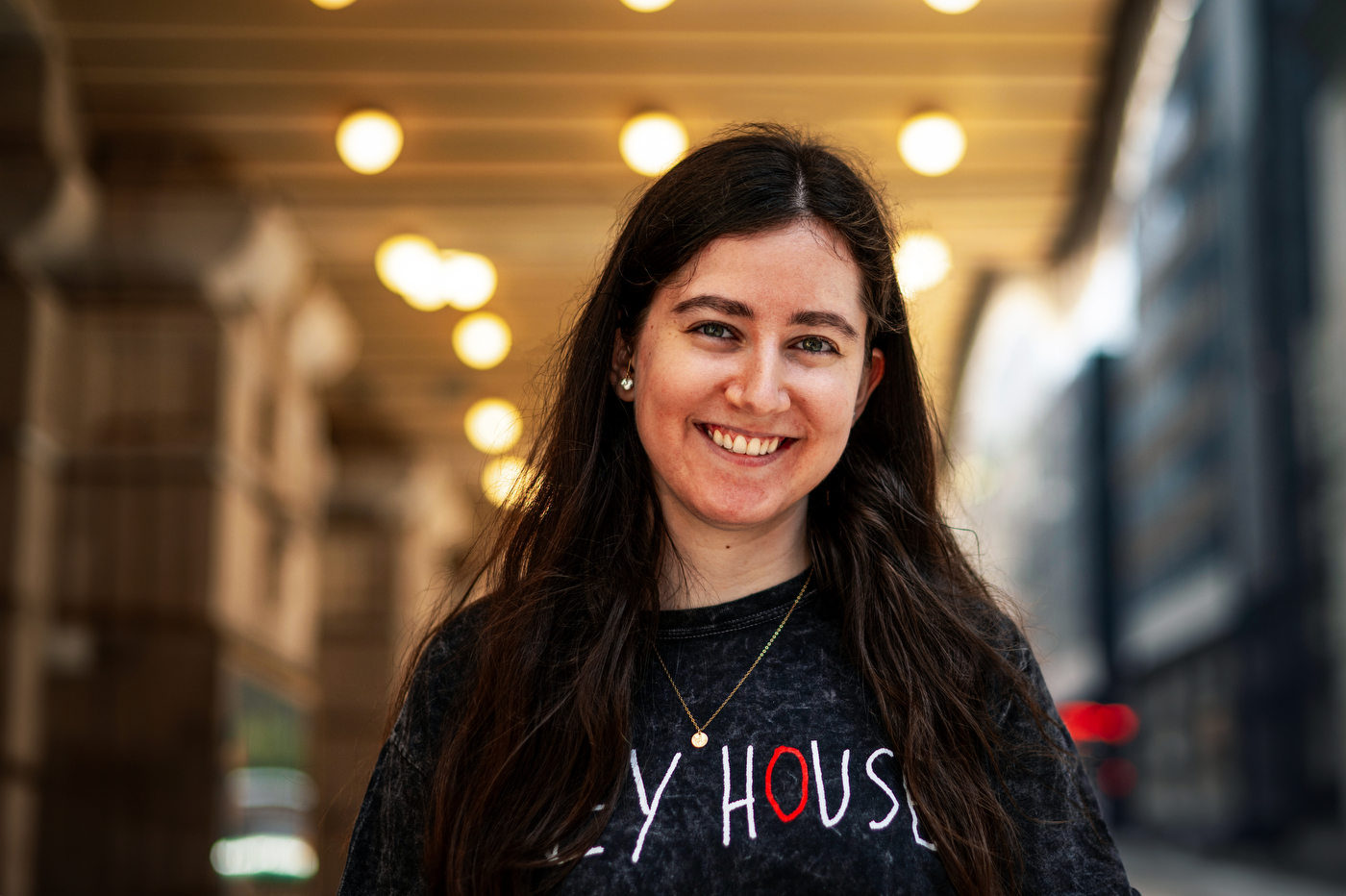
‘Many ways to translate an idea’
Northeastern’s program is small but multifaceted, including six immersive levels of ASL courses, deaf history and culture, and classes focused on deaf-blind communication. Students often pursue their ASL degrees alongside tracks in performance, human services (to work in hospitals, schools and other community settings) and the tech field, to work for companies making emerging technologies more accessible. As everywhere, the development of AI is a huge topic in the deaf community, Berman-Kobylarz points out.
“There are several deaf-run companies developing AI related to sign language,” she says. “So there may be video recognition for my signs that would translate it to spoken English. I can definitely see a future where this would be beneficial.”
In all of these areas, Northeastern’s ASL program is well-positioned: Boston is a hub for tech and health care, and many area theaters regularly use ASL interpreters. Berman-Kobylarz works in this capacity with the Citizen’s Opera House and the Emerson Colonial Theatre; this summer, she was the artistic sign language director for the Commonwealth Shakespeare Company’s outdoor production of “Macbeth.”
Boston is also a short Amtrak ride away from Broadway; as a student on co-op, Rosenfeld worked on accessibility services for productions including the 2022 revival of the musical “Into the Woods” and the Curtain Up festival in Times Square.
In the meantime, she grew her social media following and was active in the university’s theater scene. Last year, Berman-Kobylarz directed her in a campus staging of the musical “This is Treatment.” Upon first meeting Rosenfeld to discuss the show, “I was really impressed with her work ethic,” Berman-Kobylarz remembers. “She had a lot of drive and passion to become an actress.”
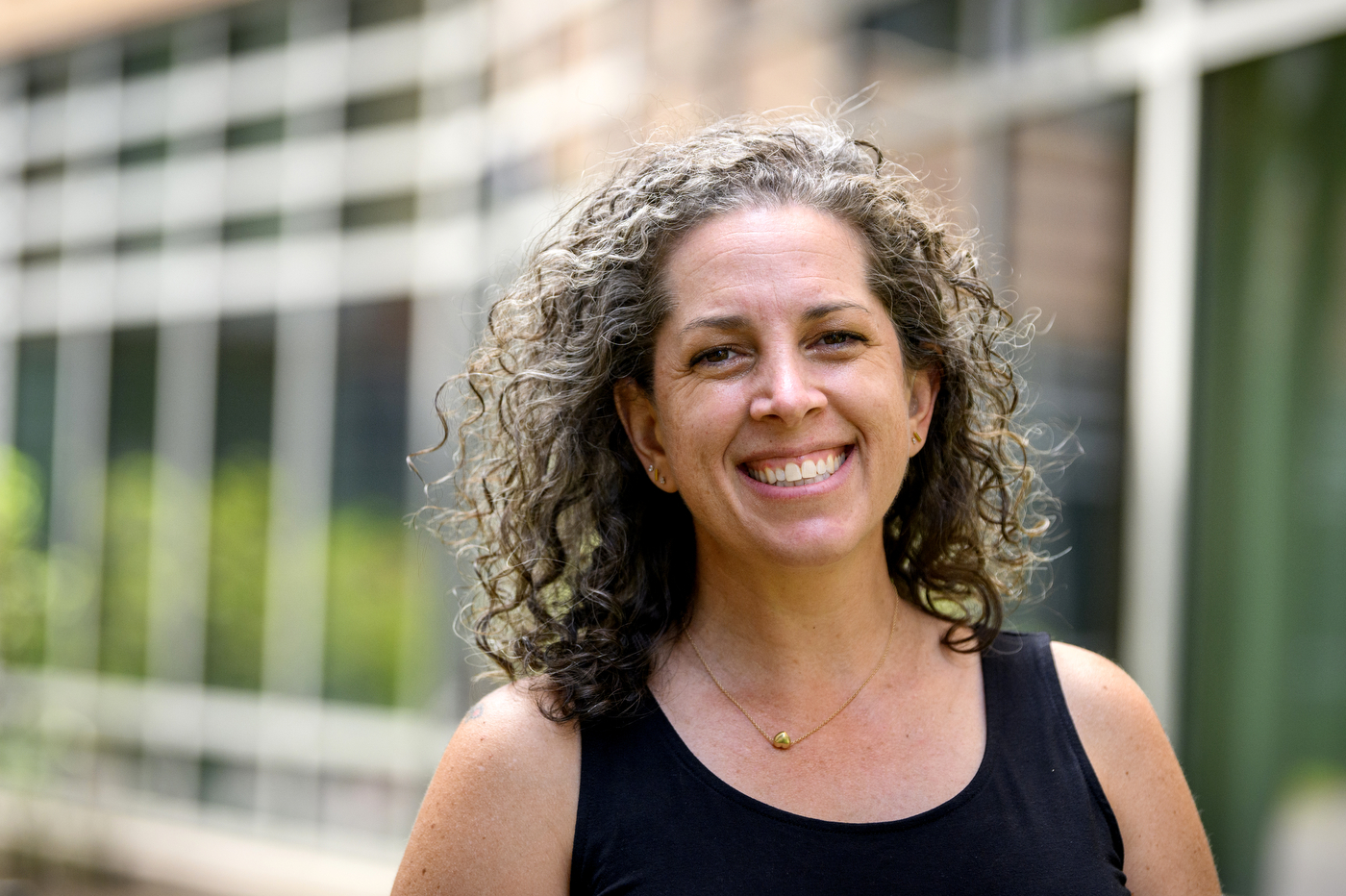
Afterward, she worked with Rosenfeld as an interpretation coach.
Sign-language-to-spoken-word interpretation is not a one-to-one transfer, but rather a form of artistic expression unto itself. “There are many ways to translate an idea,” Berman-Kobylarz says. Interpretation coaches serve the same role as a traditional acting coach might, “helping to make sure that those ideas are clear, and talking through the best decision for [each] specific line.”
The two worked together on Rosenfeld’s “Grey House” audition, which she submitted to the show’s producers in early 2023. Millicent Simmonds, a deaf actress who rose to fame in the “Quiet Place” horror movies, was already cast as Bernie, and the show was seeking deaf actors who could cover the role. Rosenfeld sent in a video, but assuming producers would never see it, planned a trip to the open casting call in New York. “I had booked the train ticket when I got an email from the casting director saying they were passing my videos on to the creative team. Less than a week after that I was offered the role.”
She was on spring break in Chicago. “I had just woken up from a nap, saw the email, and started running around the house,” Rosenfeld recalls. “And I couldn’t find my parents. They were at the grocery store.”
Big on #Deaftok
Rosenfeld eventually got her parents’ reactions on video. It’s one of the cutest things on her often-cute TikTok feed, which has proven an invaluable showcase for her versatility—as an interpretive performer, a pointed yet breezy accessibility activist, and all-around bubbly personality. There’s a wrenching performance of “She Used to be Mine,” from the musical “Waitress” at a showcase for musicians with disabilities; short sketches about interactions with well-meaning yet clueless hearing folks; and demos of technological aids for deaf people. In one series, she tells funny stories of overheard conversations she’s picked up from her Roger Pen, a device that hooks up to her hearing aids to help her better hear from far away; in another, she decorates her hearing aids with specially-made decals.
TikTok is how she came to the attention of Rachel Griffin-Accurso, better known as Miss Rachel, host of the wildly popular YouTube series “Songs for Littles.” Rosenfeld began appearing in the series last year while still at Northeastern. “A very different audience than ‘Grey House,’” she laughs.
In addition to translating nursery rhymes in ASL onscreen, Rosenfeld acts as an informal consultant for “Songs for Littles,” watching videos Griffin-Accurso sends to “make sure that either signs are correct or that she is approaching the deaf community in a respectful way.”
When Rosenfeld moved to New York, she began appearing in person, filming in front of a green screen in Griffin-Accurso’s apartment. She’s now a fixture in videos that regularly rack up a few hundred million views.
“She’s definitely a fan favorite,” Griffin-Accurso writes in an email. “Deaf parents and parents with deaf toddlers have commented on how much they appreciate seeing someone who uses hearing aids. We have a toddler class of deaf children who watch together at school, and they love Erin.”
In general, visual social media platforms—and TikTok chief among them—have made huge recent strides in sparking conversations about accessibility and highlighting differently abled content creators. TikTok began including automatic closed captioning on videos in 2021, sparking a trend of “ASL covers” of popular songs and letting deaf users easily share their life experiences. As of last year, TikTok’s #deaftok hashtag had over 1 billion video views.
Berman-Kobylarz says such platforms have also proven powerful tools for deaf people to voice concerns about accessibility and representation. “When we see hearing people take deaf roles, for example, the community will fight back,” she says. “Now we have a platform to speak up, the news can travel fast, and we educate people on who should really be in the spotlight. Technology has opened the doors [for] a lot of conversations.”
Plugging ahead
Fruits of that progress are on display backstage at the Lyceum—a labyrinthine building and the oldest working theater on Broadway. Three ASL interpreters are on the “Grey House” production crew. Green flashing light cues have been installed for the deaf actors, and stage managers type all verbal instructions into captions for the in-house monitors. When mask requirements were still in place, clear masks to enable lip-reading were provided. For audiences, hand-held closed captioning devices are available, and “Grey House” has had a few select dates with ASL-integrated stagings.

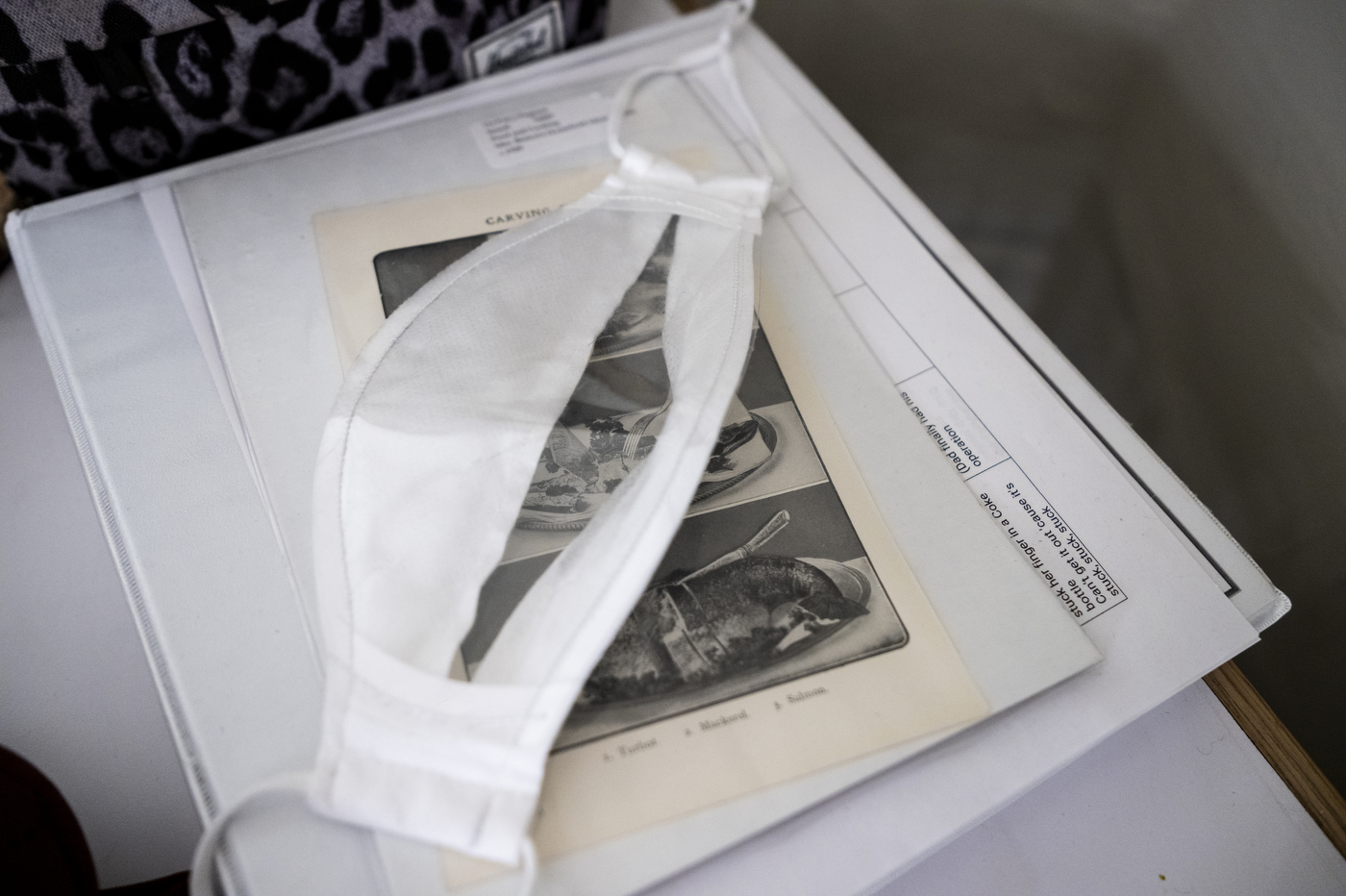
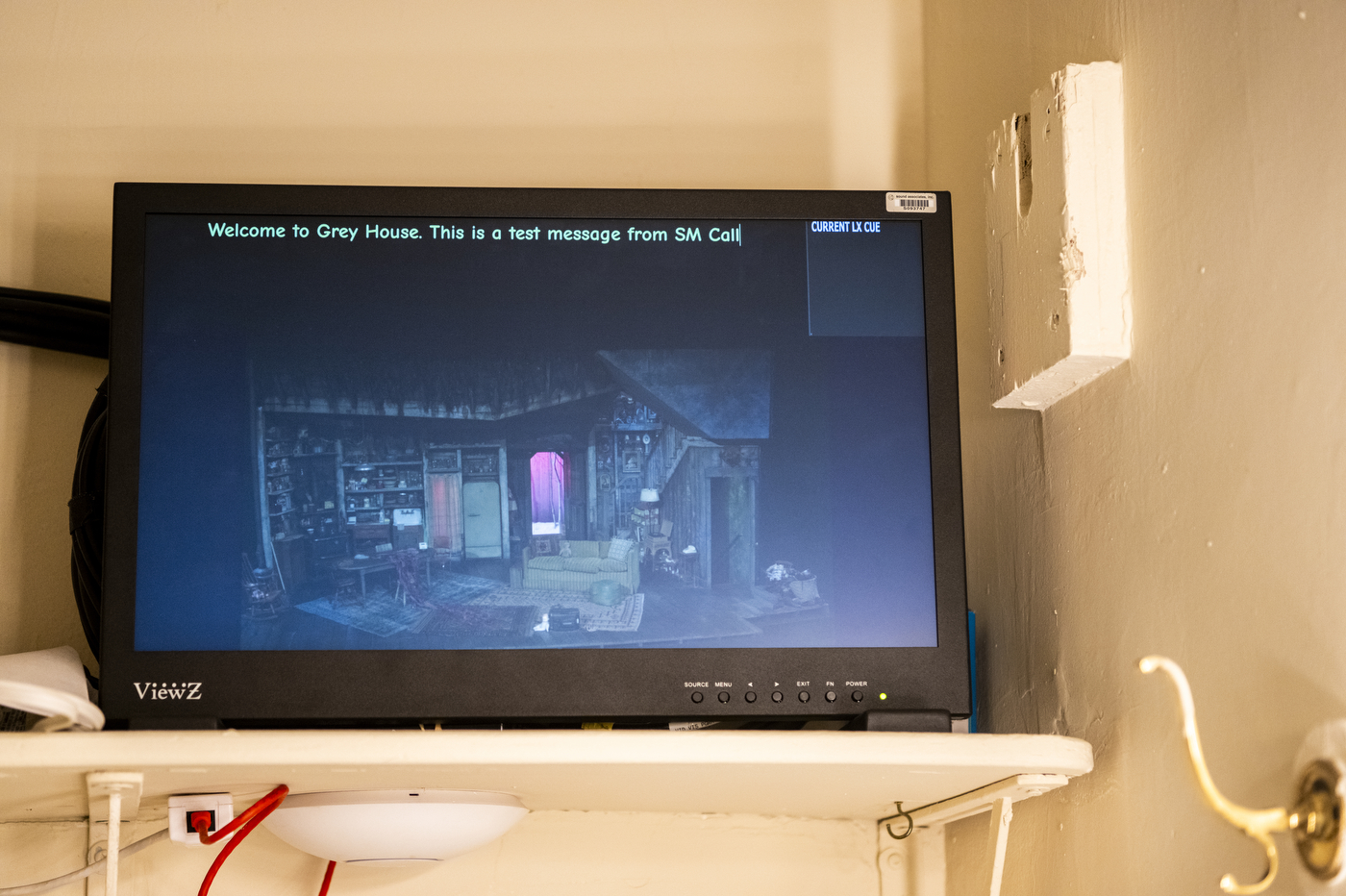
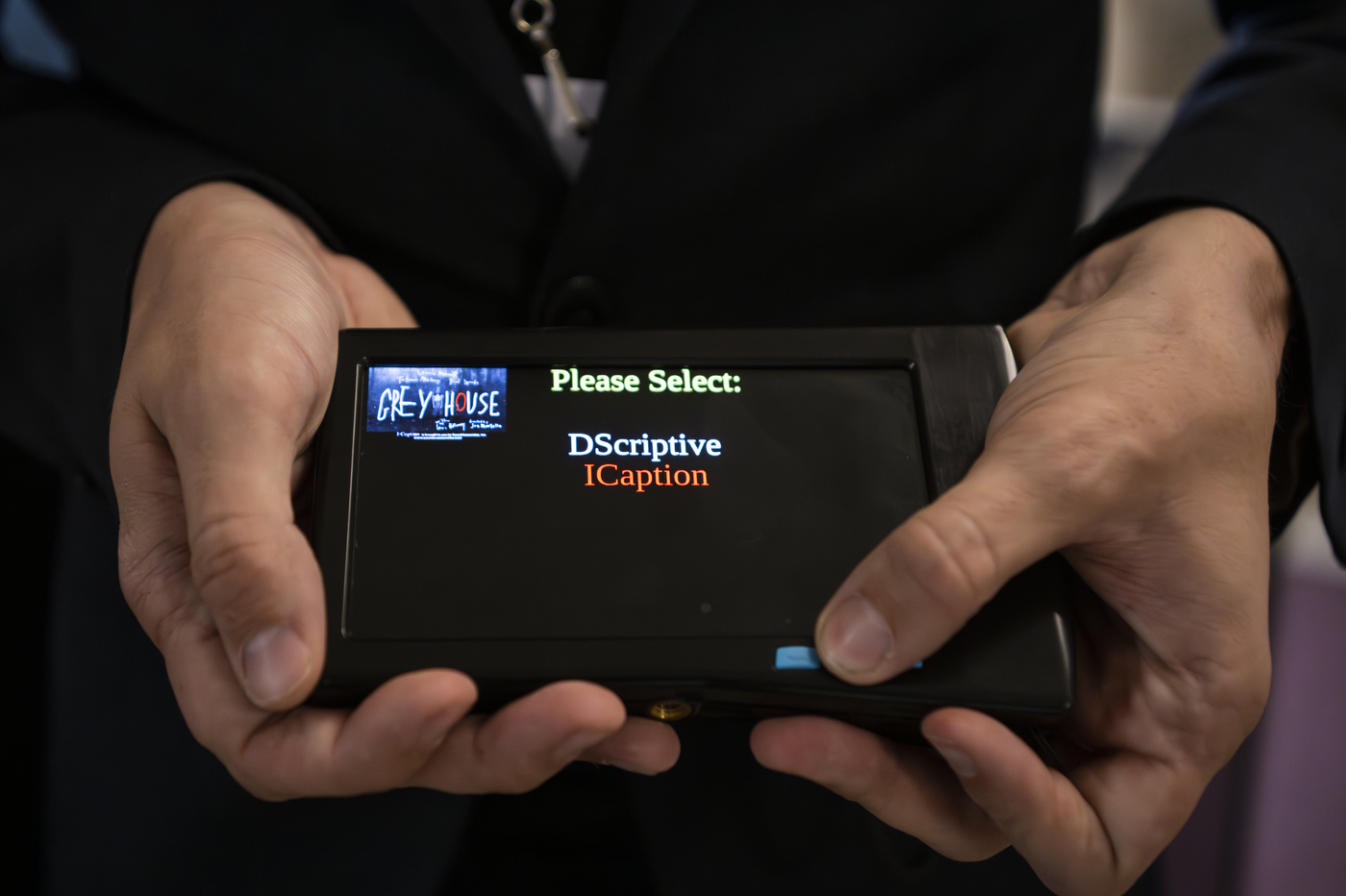
There is still more to be done, Berman-Kobylarz thinks. “Depending on the theater, you may have to advocate for yourself. Some theaters may not understand that disability doesn’t just mean wheelchair access, it also means language access.” She points out that “Grey House” only offered a handful of ASL-inclusive performances, even with a deaf principal cast member. On the other side of the curtain, she says producers still don’t often understand how much time it takes to prepare a sign-language interpretation for a show. “It’s not something where you can just show up and do it.”
Still, she says, it’s come a long way, both onstage and off. As a deaf child in a hearing family, Berman-Kobylarz was initially taught to communicate through speech and lip-reading; now, she talks to her family through Google Meeting’s auto-captioning. More companies have text-based chat functions for customer service. And as sign language and deaf interpreters have become more visible online and in popular media, interest in learning ASL has grown. At Northeastern over the past few years “our ASL classes have become full,” she says.
Back in New York, “Grey House” is closing in a few days. Rosenfeld, though faced with the same uncertainty as any working actor when a regular gig dries up, has promising opportunities ahead. She graduated from Northeastern in May and attended the commencement blowout at Fenway Park. Next, she’s working on an independent film in Maine and performing at a New York fundraiser for Deaf Austin, a theater in Texas. She’s auditioning for shows and would like to get an agent, but thinks the SAG-Aftra strike in Hollywood will probably delay that. “I’ll just keep plugging ahead, see what happens,” she says.
To commemorate their time in “Grey House” together, she’s given her castmates bracelets with beads that spell their character names out in ASL.
Northeastern University staff interpreter Cayle O’Brien and ‘Grey House’ crewmember Dylan Geil provided ASL translation for interviews in this story.
Schuyler Velasco is a Northeastern Global News Magazine senior writer. Email her at s.velasco@northeastern.edu. Follow her on Twitter @Schuyler_V.


